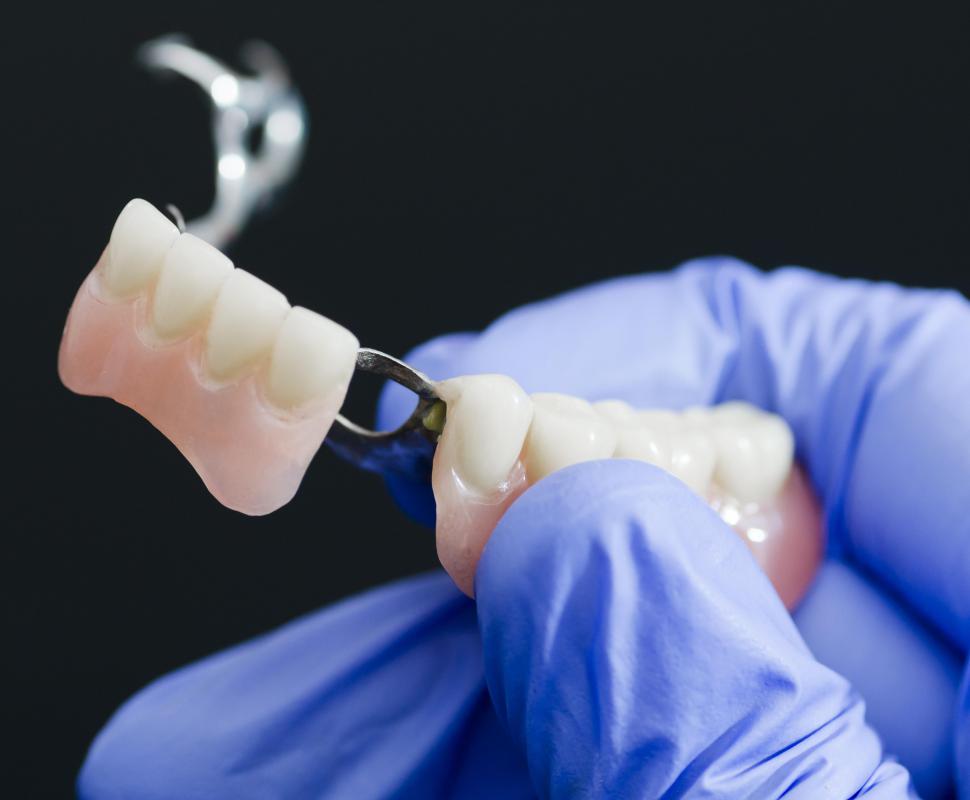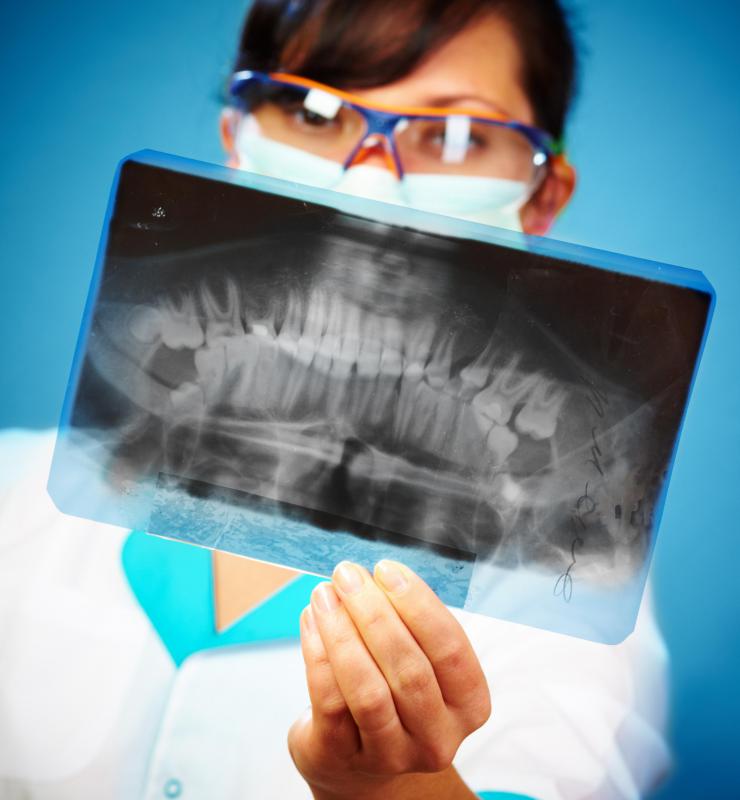At WiseGEEK, we're committed to delivering accurate, trustworthy information. Our expert-authored content is rigorously fact-checked and sourced from credible authorities. Discover how we uphold the highest standards in providing you with reliable knowledge.
In Dentistry, What Is a Facebow?
In dentistry, a facebow may refer to two instruments or apparatus. One is an instrument used by dentists to determine positional relationships, such as for the production of dental casts. A second meaning of the term is an apparatus worn by patients to correct bite or jaw problems. This type of facebow is also frequently called headgear, referring to the headgear that keeps the facebow in place.
Instrument that determines positional relationship of the jaws to the jaw joints

A facebow is an external metal instrument used in dentistry to precisely record the relative positions of the maxillae, bones of the upper jaw, against the joints of the jaw called temporomandibular joints. A dental facebow is typically made from aluminum or thick stainless wire. This arch-shaped, caliper-like device measures the character of the bite of the patient. It is then detached to transfer the cast impressions of the teeth to an articulator, which makes crowns, bridges, and dentures.

A dental facebow determines the relationship between the upper teeth and jaw joints by representing two planes. The plane of the cranium is represented by the U-shaped frame, while the bite fork represents the plane of the maxilla. In order for the planes to be set and angled accurately, the locking device is inserted. Proper alignment of the device is crucial to form accurate impressions of the teeth by the articulator.

The two types of facebow instruments are arbitrary and kinematic. Arbitrary facebows include the facia type, earpiece type, and the spring bow type. Other subtypes include slidematic, twirlbow, and whipmix. The kinematic type is also called the hinge type. It is used to create fixed partial dentures and for full mouth rehabilitation.
There are four parts of a facebow device: the U-shaped frame, condylar rods, biting fork, and the locking mechanism. The frame is the metal arch that supports the whole device. Condylar rods are inserted at the ends of the frame and anchor it over the joints of the jaw. The bite fork is a U-shaped plate attached to the rims. A rod that connects the bite fork to the frame serves as the locking device.
Apparatus worn to correct bite or jaw problems
A corrective facebow, or headgear, acts as a splint to hold the jaw and teeth securely together. The device allows tension to transfer from the dental headgear to the teeth through the use of straps attached to the facebow headgear. It is useful in correcting cross bites by pushing the posterior section or the molars far back enough to create additional space for teeth at the front of the mouth.
Generally, a facebow or headgear is required to be worn for 12 hours a day. For safety reasons, it is important to make sure that the facebow is strapped to headgear. The headgear ensures that the instrument is inserted firmly inside the buccal holes at the back of the mouth. If the device is bent or twisted, the frame or wire can snap and injure parts of the face, like the eyes.
AS FEATURED ON:
AS FEATURED ON:













Discussion Comments
You guys have it wrong. These facebows that are being talked about above are for use for prosthetic procedures to relay the patients maxillary dental cast to an articulator. They are only meant to be used in the dental office and not to be used outside in real life.
It takes about 2 minutes for the dentist to use it and should be used mainly for full mouth rehabilitation.
@JessicaLynn - Dental facebows do look pretty awful. However they are used to correct some pretty unpleasant dental conditions including serious bite problems.
Although wearing a headgear would be problematic for a kid I think it would be even worse to be an adult with a crazy looking bite. I had braces when I was younger and it did suck but now I have nice straight teeth.
Oh my goodness. I feel so sorry for people who have to wear these devices. Having braces was bad enough, I can't imagine having had to walk around with a headgear on!
I think headgears with facebows may have fallen out of fashion though. When I was younger I think I remember maybe one person at my middle school had them. Now I rarely see them in public.
Post your comments